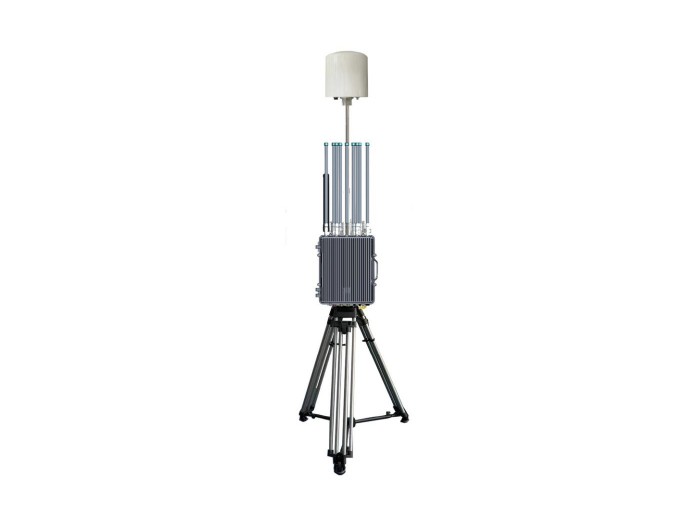Commercial Drone Jammer: Trends, Benefits, and Applications in 2024
As commercial drones become increasingly prevalent, concerns about unauthorized drone incursions and privacy breaches are rising across industries. Organizations managing sensitive facilities, critical infrastructure, or large events face significant risks from rogue drones that can compromise security, disrupt operations, or violate privacy regulations. This growing challenge has propelled the demand for commercial drone jammer solutions designed to detect and safely neutralize unauthorized drones effectively. By integrating effective drone jamming technology, businesses and security professionals can proactively safeguard their assets and maintain operational integrity in an environment where commercial drone use is rapidly expanding worldwide.
Understanding Commercial Drone Jammers: What They Are and How They Work
A commercial drone jammer is a sophisticated device engineered to disrupt the control and communication signals between a drone and its operator. Utilizing radio frequency interference, it blocks or weakens the connection that a drone depends on to receive commands and transmit telemetry. Most commercial drone jammers operate by targeting common frequencies used by drones, including 2.4 GHz and 5.8 GHz bands, emitting signals that override legitimate drone controls and forcing the drone to either hover, return to its launch point, or land safely.
Recent studies reveal that nearly 40% of security incidents involving critical infrastructure are caused by unauthorized drone activities, underscoring the need for reliable counter-drone measures. Commercial drone jammers serve as an essential tool within broader counter-drone systems—often integrated with detection technologies such as RADAR and RF scanners—to effectively mitigate drone threats before they escalate. These solutions are tailored to provide both targeted and area-wide protection depending on the environment, balancing interference control with legal regulations governing frequency use.
Key Benefits of Using Commercial Drone Jamming Solutions
Adopting a commercial drone jammer offers multiple security and operational benefits for enterprises in sectors like energy, transportation, law enforcement, and event management. Firstly, it enables rapid and non-destructive neutralization of unauthorized drones, preventing potential disruptions such as espionage, smuggling, or disruptive aerial photography. According to recent security reports, facilities equipped with drone jamming systems have reduced unauthorized drone incidents by over 70% within the first year of implementation.
Secondly, commercial drone jammers provide enhanced situational awareness by integrating with detection sensors, allowing security teams to quickly identify and respond to threats. This capability not only increases operational safety but also helps comply with growing regulatory requirements related to drone management. Additionally, modern commercial jammers are designed with customizable power output and directional antennas to reduce collateral interference and comply with local laws regarding frequency emissions.
Practical Applications of Commercial Drone Jammers in Various Industries
Commercial drone jammers see extensive application across multiple scenarios that require advanced drone threat suppression. In airports, jammers prevent drones from interfering with aircraft operations, safeguarding lives and infrastructure. For correctional facilities, they block drone deliveries of contraband, improving institutional security. Event organizers use commercial drone jammers to maintain privacy and protect crowds during concerts and sports games. Moreover, government and military facilities deploy these systems to prevent unauthorized surveillance and enhance perimeter defense.
A recent case study from a major European stadium showed that deploying a commercial drone jammer during major sports events eliminated drone-related disruptions entirely, ensuring spectator safety and uninterrupted broadcasting. Similarly, energy companies employ jammers to secure remote installations such as oil rigs and power plants, where drone incursions could result in operational hazards or data breaches.
Recommendations for Selecting and Implementing Commercial Drone Jammers

- Assess Your Security Needs: Evaluate the specific threats and operational environment to choose a drone jammer that covers the required frequency bands and detection ranges.
- Ensure Legal Compliance: Verify local regulations regarding drone jamming before deployment to avoid legal complications, and consider jammers with adjustable output power features.
- Integrate with Detection Systems: Combine jamming technology with detection sensors such as RF scanners and RADAR for early threat identification and comprehensive protection.
- Provide Training for Operators: Equip security staff with proper training to operate the jammer safely and understand its impact on surrounding communication devices.
- Consult Experts: Contact our specialists for professional consultation and tailored solutions that align with your organizational needs and compliance requirements.
Want to learn more about how commercial drone jammers can protect your assets? Visit our website or contact us for expert advice and customized drone security solutions.
Conclusion: Secure Your Operations with Advanced Commercial Drone Jammer Technology
In today's rapidly evolving drone landscape, commercial drone jammers have become indispensable tools for maintaining security, privacy, and operational continuity across numerous industries. By understanding the technology, benefits, and application scenarios, organizations can make informed decisions that effectively mitigate unauthorized drone threats. Our company’s expertise in delivering state-of-the-art counter-drone solutions ensures you receive reliable, legally compliant, and customized protection suited to your unique environment. Visit our website now or contact us for a free consultation and take the first step toward securing your facility against drone-related risks effectively.
















